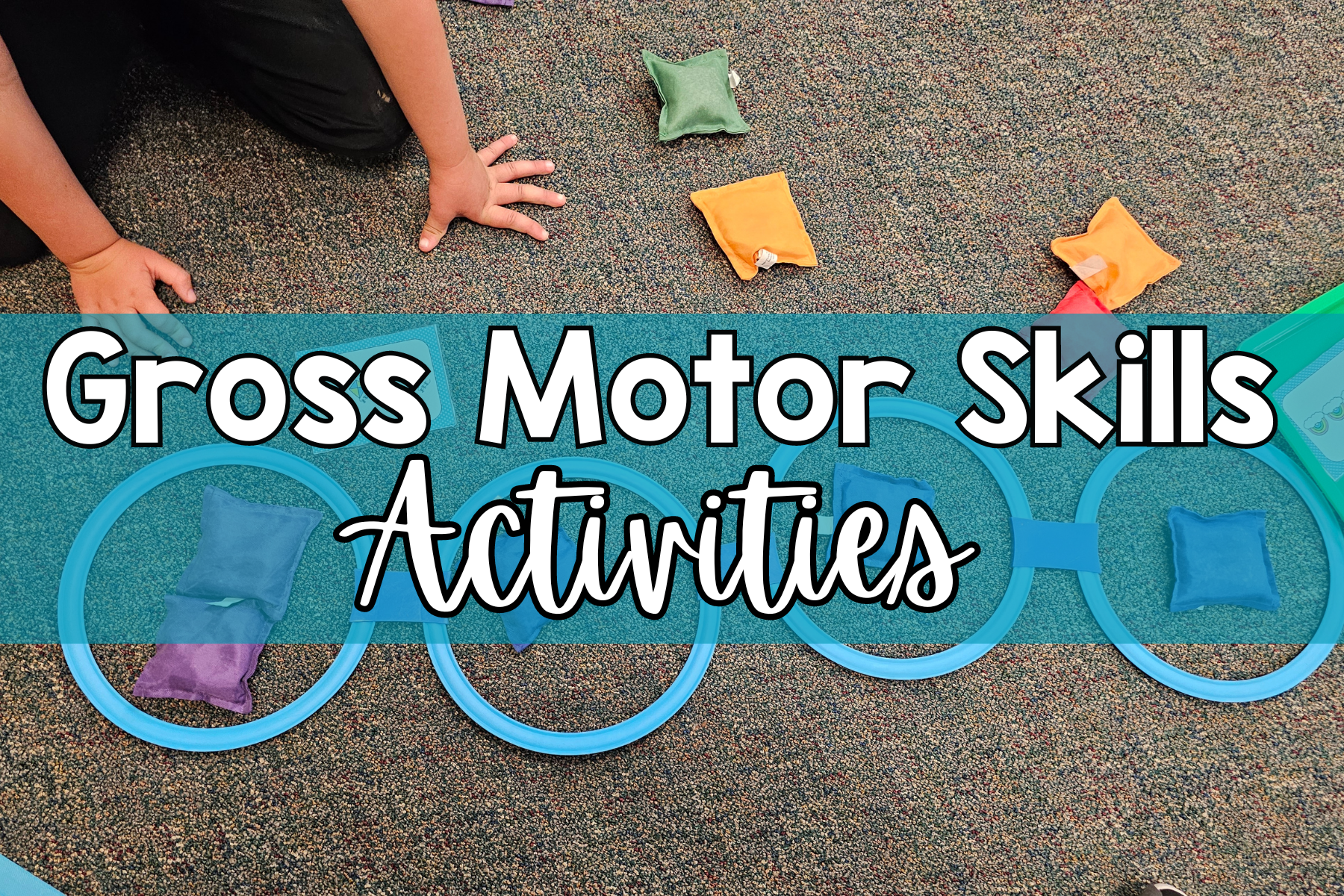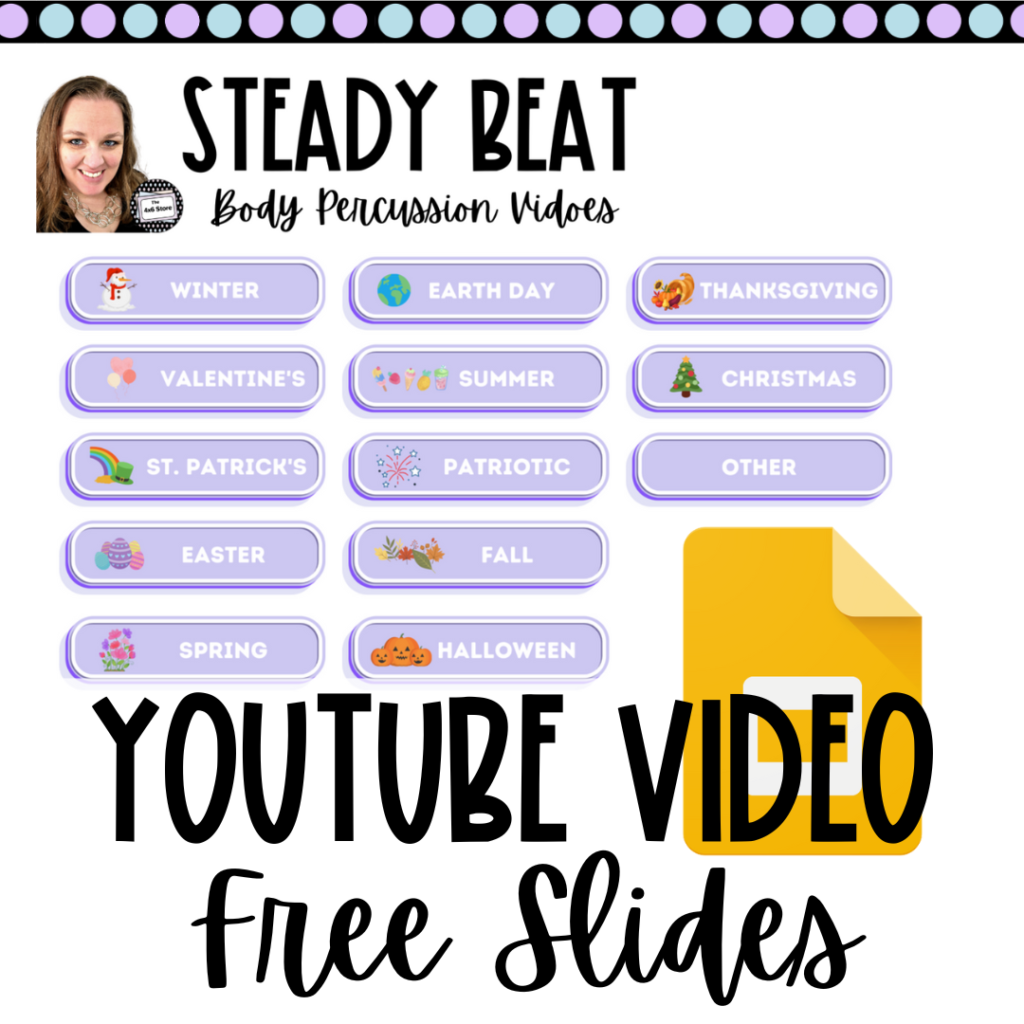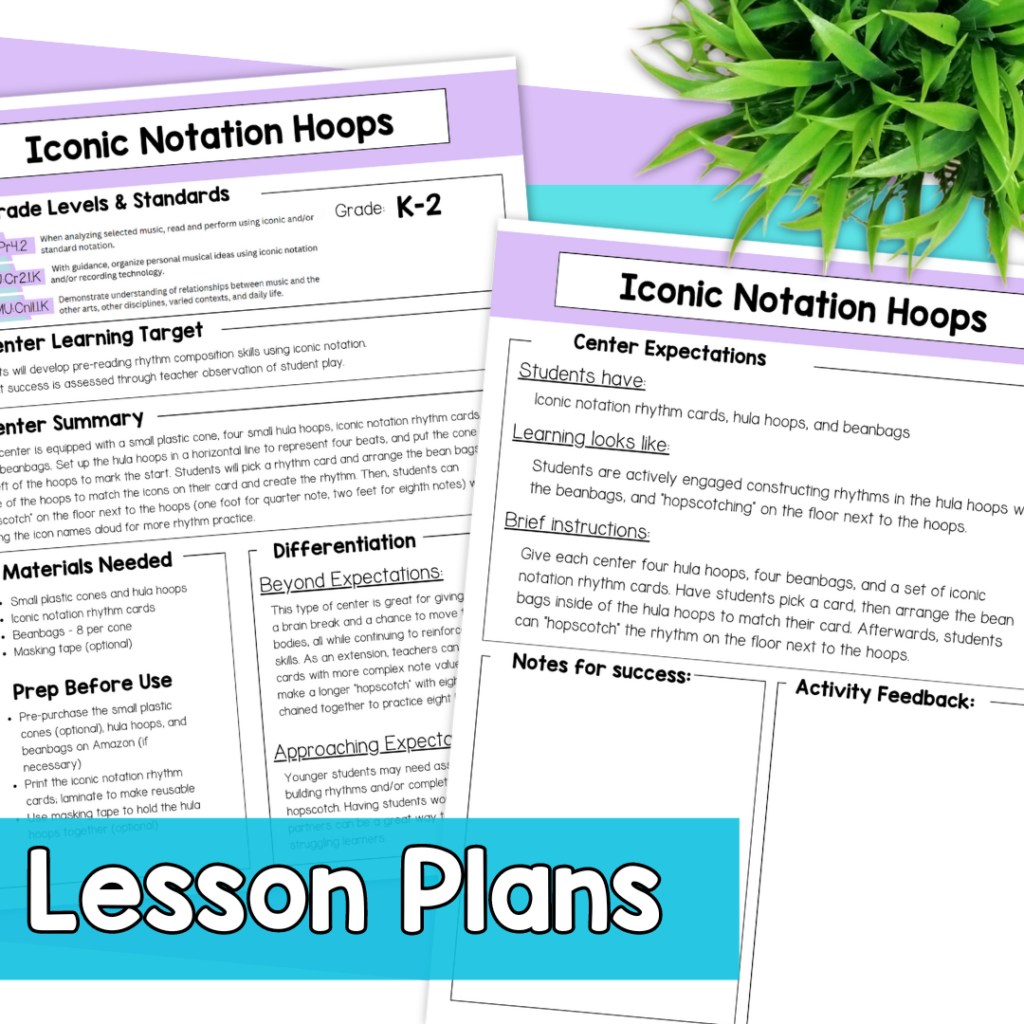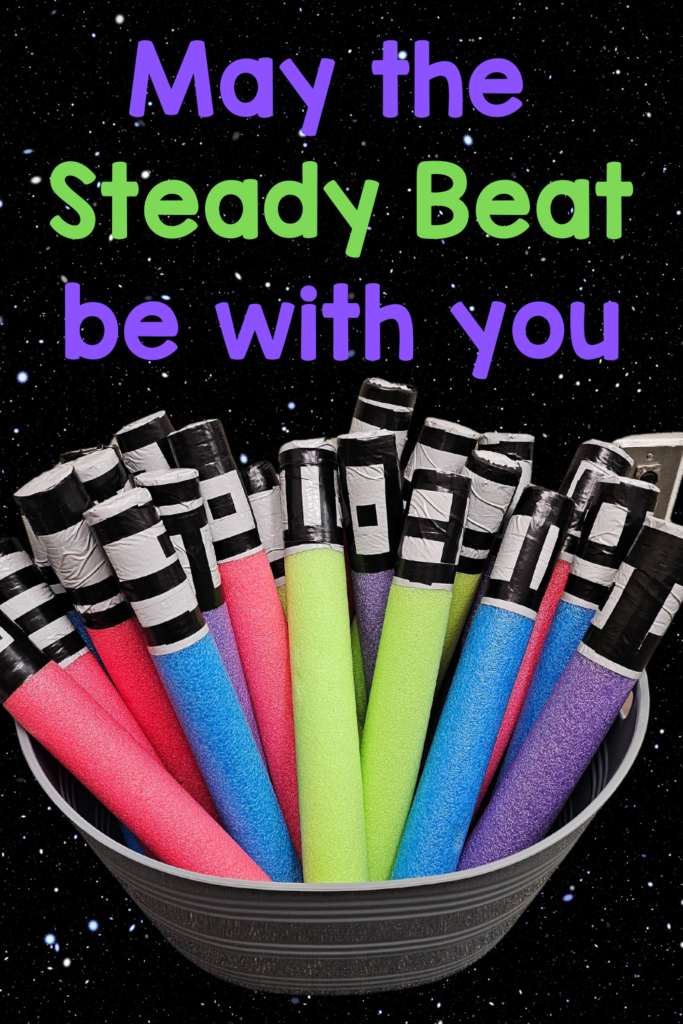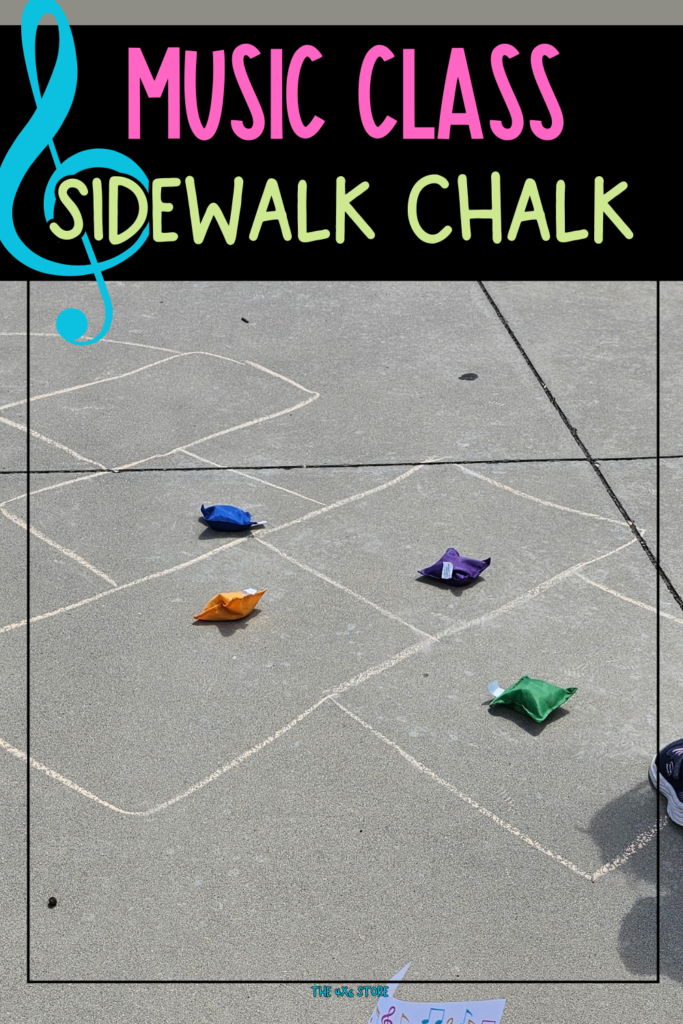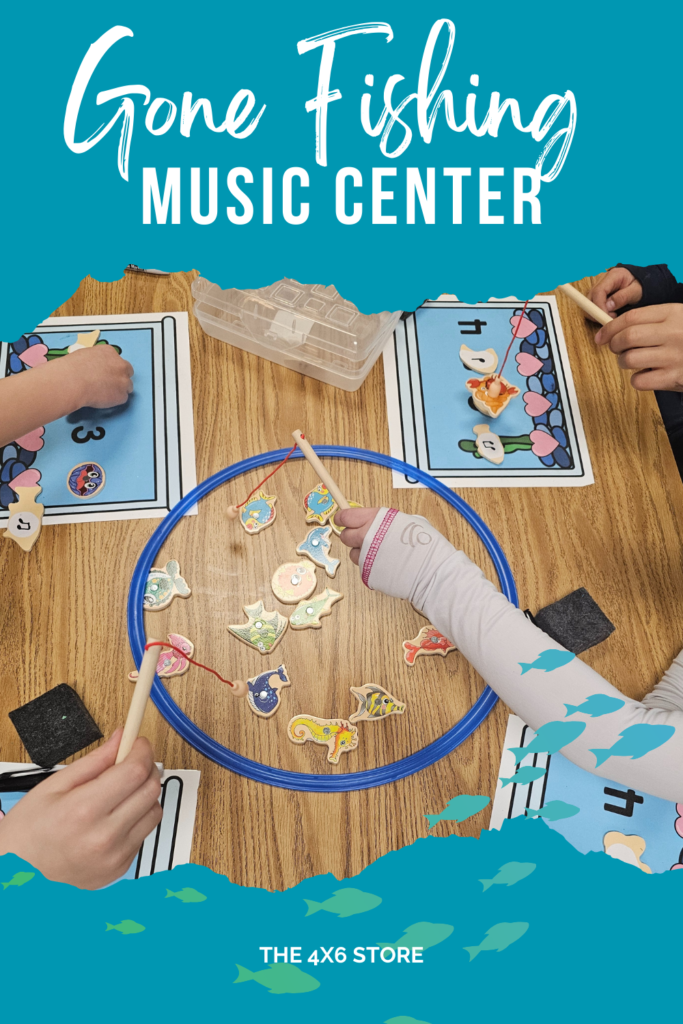7 Play-Based Strategies to Develop Gross Motor Skills in Music Class
Imagine trying to get a kindergarten student to draw the treble clef on a staff.
Did you chuckle or roll your eyes? I did both!
Most kindergarten students are not going to get music theory through paper-pencil activities. Their fine motor skills simply aren’t there yet! Complicated writing – like a treble clef – takes the development of their fine motor skills.
But, do you know what I’ve noticed lately about my kindergarteners gross motor skills? They seem to be behind! Noticeably behind. I tried to get my kinders to jump to a simple steady beat, and they practically fell on their noses as they tripped over their own feet! (Read about that story, here.)

So I added play-based strategies and activities to my music classes in order to teach music concepts AND develop motor skills for my kindergarteners!
Because I’m not here for the concussion risks. Nope.
This post contains affiliate links. As an Amazon Associate, I earn from qualifying purchases at no extra cost to you! All affiliate links in this post will be marked with an *. My participation in the Amazon Associate program helps keep other “annoying” advertisements off my website. – Thanks!
Table of Contents
- The Chaos of Play-Based Music Class
- Developing Gross Motor Skills in Music Class
- 7 Fun, Play-Based Strategies to Develop Gross Motor Skills in Music Class
- Whole Body Coordination: the Steady Beat
- Scarf or Ribbon Dancing: Crossing the Midline
- Parachute Play: Not Just for Gym Class
- Expressive Movement: FREEZE DANCE!
- Simple as a Song: Move and Sing
- Instruments: Bangs, Clangs, and Brain Building
- Kinesthetic Activities: Hoops and Bean Bags
- Resource Roundup: videos, resources, and more!
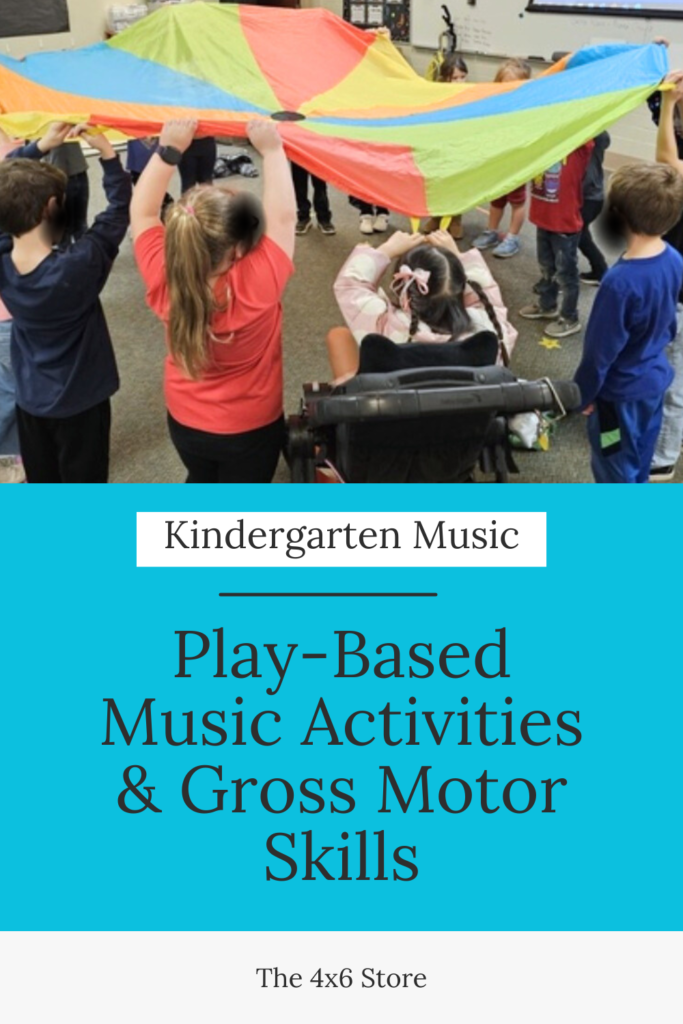
The Chaos of Play-Based Music Class
“Oh you’re a kindergarten music teacher? You must get to play all day!”
Sound familiar?
I’m not going to lie: if you were to walk into my kindergarten music class, it WILL seem like all I’m doing is playing with the kinders all day. Some days, it does feel like the best job in the world – with built in exercise time!
(Some days, I want to curl up in a ball because I’ve been overstimulated by all the chaos that comes with it all. I digress)

There’s a method to the madness that comes with teaching kindergarten music though, and one of them is to ensure that kids have full body rhythm. And that leads to another added benefit: helping my kindies develop gross motor skills.
When you give them regular opportunities to jump around, and practice doing so to music, not only is it fun, but the play time helps strengthen their coordination.
And you know, the better their coordination, the less chance of them tripping on their feet and falling on their noses!
My best advice to keep the chaos in control is to practice your expectations. Have cues for when movement activities start and stop. Discuss the concept of personal space and watching where you’re going. Practice, practice, practice.
Developing Gross Motor Skills in Music Class
If you need a refresher of the importance of gross motor skills, make sure you read this first.
But why would we focus on gross motor skills in music? Below is a quick glance at the “big picture” benefits:
- Enhancing Physical Coordination
- Supporting Cognitive Development
- Improving Social Interaction
- Promoting Physical Fitness
- Fostering a Love for Music and Movement
Keep reading for some play-based music activities that will help your students with their gross motor skills in music!
7 Fun, Play-Based Strategies to Develop Gross Motor Skills in Music Class
Alright, I know you get it. So let’s get to the good stuff: the play-based strategies I’ve developed to support my kindies and their gross motor skills in music class.
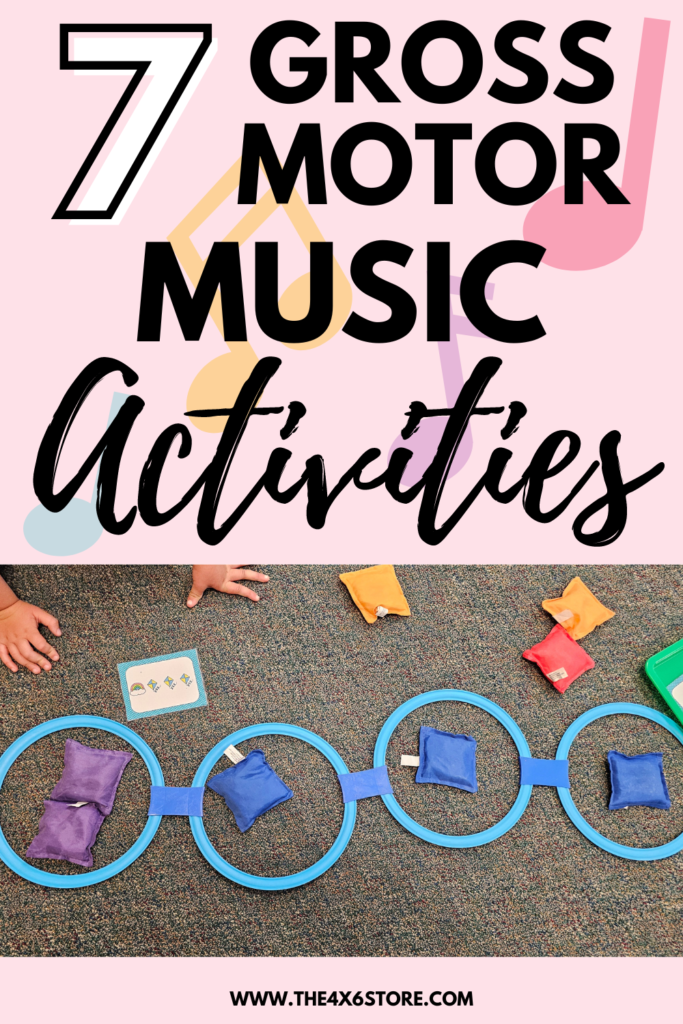
Here are my top 7!
Whole Body Coordination: the Steady Beat
Moving their whole bodies to a specific timing? Forget it. My kinders just couldn’t. Moving their whole bodies, trying to land in plastic rings to a steady beat became a fall risk! At least that was the case when I first introduced jumping with their whole bodies to a beat. (I’ve learned to leave the hoops in the closet until we get better and motor planning!)
So, I designed these Steady Beat videos!
Instead of starting with their whole body, my students had to stand in one spot and move multiple body parts to a steady beat first. I used these Steady Beat Videos that I created to facilitate the fun.
Once I gave them time to practice these full-body movement activities, they finally began to improve in their ability to jump to a rhythm.
It took time. But they got there eventually!
Scarf or Ribbon Dancing: Crossing the Midline
Until I had my own children, I didn’t understand how important activities that cross the midline are! After watching Son #2 spent several years in OT for some sensory processing help, I was able to watch first hand the benefits of having kids cross the midline. — But that’s a whole different post (coming soon!).
In short, crossing the midline is when an arm or a leg from one side of the body does an activity that goes into the space of the other half of the body. (Anyone remember the Macarena?! Steady beat and midline crossing – Boom!)
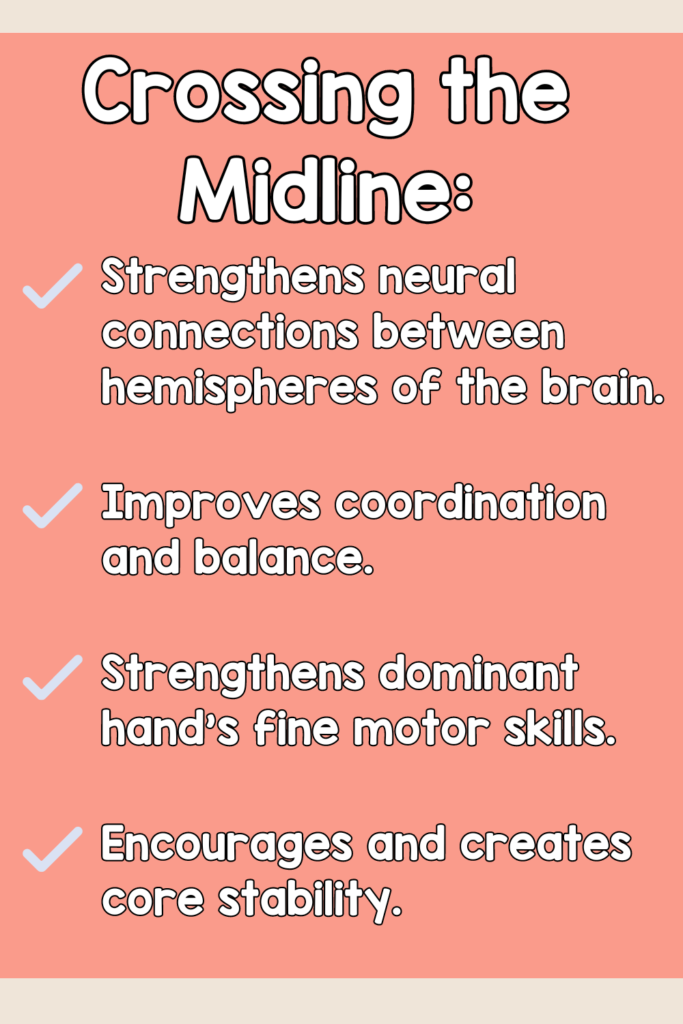
Using scarfs or ribbons to move to a steady beat is a great way to get kids up, moving, and crossing the midline. They won’t even know they are building new neural connections and improving their bilateral coordination! 🙂
Parachute Play: Not Just for Gym Class

Think back to your favorite days in gym. They probably included a huge parachute, running from side to side, or launching balls to the ceiling. Why let gym teachers have all the fun? Parachutes can be for music class, too.
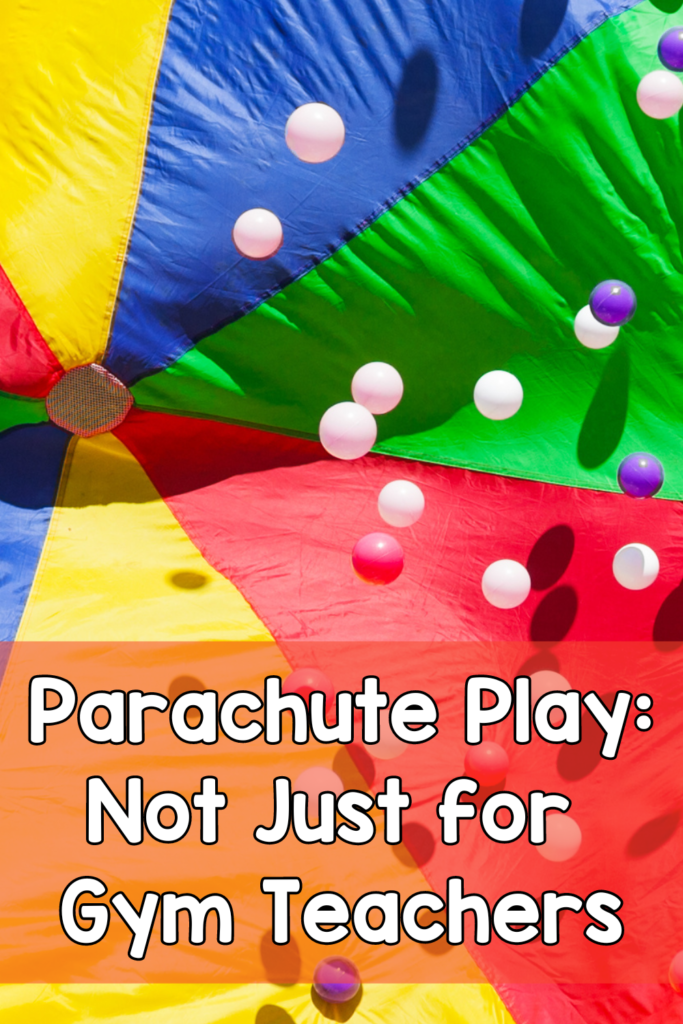
When I use my parachute in class, we are focusing on musical elements like steady beat or high and low. But, it also gets their little arms moving up and down and their feet moving around in a big circle in controlled manner. (My favorite activity is to put a small Beanie Baby teddy bear on the parachute and use the “Teddy Bear, Teddy Bear” jump rope rhyme. Keep an eye on my updates – this activity and my other favorite parachute activities are coming soon!)
Believe me – this activity is a favorite and may become a core music class memory!
(Also – word to the wise, if you do this with your littles, don’t spend 5 classes in a row squatting down to hold the chute at your height. Your legs will not like you the next day. Ask me how I know…)
Expressive Movement: FREEZE DANCE!
The freedom to wiggle however you want? What kid doesn’t like THAT?
Music is one of the few places at school where children get to express themselves, so Freeze Dance is the BEST buy-in for them to practice their gross motor skills.
I have a whole blog post dedicated to how I use Freeze Dance in Music Class, along with these Freeze Dance Music Videos that I use quite often with my kinders to get them to move.
As an added bonus, improvisational skills to translate musical concepts into physical expressions – this is a core music standard. Win-win!

Simple as a Song: Move and Sing
Adding gross motor activities doesn’t have to be only done with rhythm. You can integrate movement with your singing standards, too! It took writing this blog post to realize that my childhood was full of songs encouraging gross motor development! The Wheels on the Bus? Check ✔️ Here We Go ‘Round The Mulberry Bush or This is the way we… with improvised actions? ✔️ The Hokey Pokey? ✔️ Going on a Bear Hunt? Yep ✔️
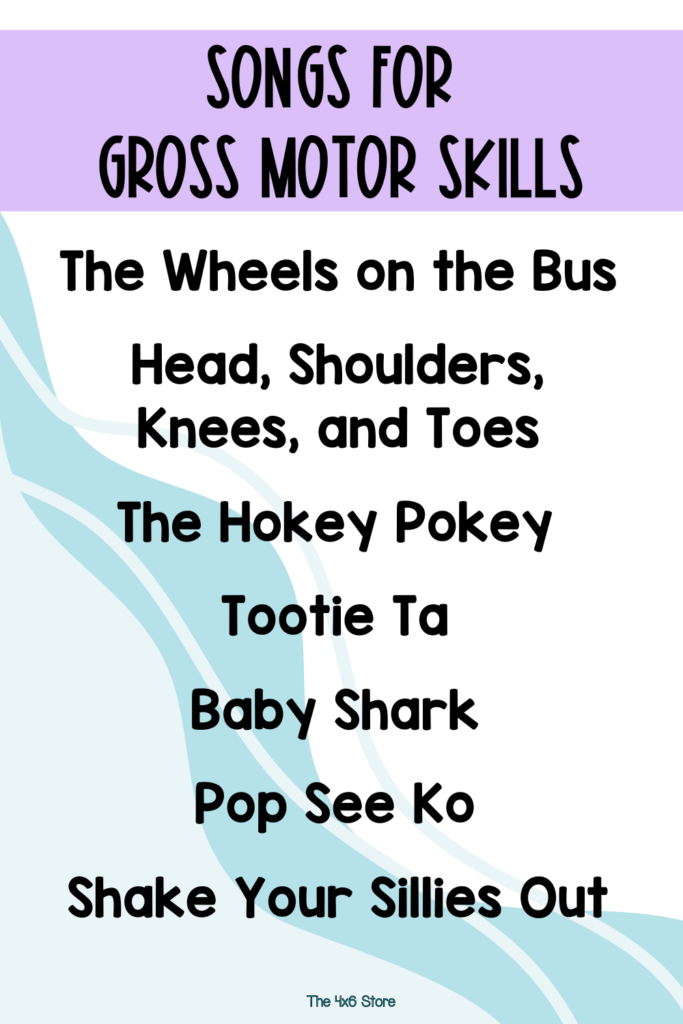
All developing coordination and gross motor skills through play. Many kids come to kindergarten not knowing these songs! Bringing these classics back into the classroom can help build up gross motors skills!
Instruments: Bangs, Clangs, and Brain Building
If you’ve been around awhile, you will know that I love Boomwhackers*. They are the perfect for young musicians developing their motor skills! Boomwhackers take less precision to produce sounds than say, a xylophone.
Large drums or tambourines are also great instruments to use to develop motor skills. Playing these instruments at different dynamics makes your musicians think about how hard or soft the instrument is played. Determining the intensity of their hit requires – you guessed it. Developed gross motor skills.
Kinesthetic Activities: Hoops and Bean Bags

Research has shown that the more senses we can involve in the learning process, the more likely we are to retain what we learn. Musical concepts are not exempt! Music and movement, as shown above, are so closely related. Getting your musicians moving is JUST. THAT. IMPORANT.
Here is an example of one concept I turn into a kinesthetic center. Towards the end of the year, when my kinders have had time to master steady beat and we jump further into rhythm, I bring out my rhythm hoops and bean bags. We combine stead beat, quarter vs eighth notes, and jumping to “bring it all together.” We explore it together before breaking into centers to try it out!
To find FREE lesson plans for this activity, click here!
Resource Roundup: Videos, Resources, and more!
I’ve linked resources and videos everywhere in this blog, so here they are in a clean checklist for you.
The blogs and articles:
The YouTube Videos:
If you’re interested in more resources and videos – and not specific to gross motor skills, here are other activities I’ve used with my kinders that work well with my play-based classroom as well!
Hope you find these resources useful! If you have any questions at all, please feel free to send me an email. I read all of them 🙂
Sources
Panggung Sutapa, et al. “Improving Motor Skills in Early Childhood through Goal-Oriented Play Activity.” Children (Basel), vol. 8, no. 11, Multidisciplinary Digital Publishing Institute, Nov. 2021, pp. 994–94, https://doi.org/10.3390/children8110994. Accessed 5 Mar. 2024.
Piek, Jan P., et al. “The Relationship between Fine and Gross Motor Ability, Self-Perceptions and Self-Worth in Children and Adolescents.” Human Movement Science, vol. 25, no. 1, Elsevier BV, Feb. 2006, pp. 65–75, https://doi.org/10.1016/j.humov.2005.10.011. Accessed 5 Mar. 2024.
Oliveira, Carlos, et al. “Associations between Gross Motor Coordination and Academic Achievement in Elementary School Children.” Human Movement Science, vol. 32, no. 1, Elsevier BV, Feb. 2013, pp. 9–20, https://doi.org/10.1016/j.humov.2012.05.005. Accessed 5 Mar. 2024.
Skinner, Rosemary A., and Jan P. Piek. “Psychosocial Implications of Poor Motor Coordination in Children and Adolescents.” Human Movement Science, vol. 20, no. 1-2, Elsevier BV, Mar. 2001, pp. 73–94, https://doi.org/10.1016/s0167-9457(01)00029-x. Accessed 5 Mar. 2024.
Leonard, Hayley C., and Elisabeth L. Hill. “Review: The Impact of Motor Development on Typical and Atypical Social Cognition and Language: A Systematic Review.” Child and Adolescent Mental Health, vol. 19, no. 3, Wiley-Blackwell, Feb. 2014, pp. 163–70, https://doi.org/10.1111/camh.12055. Accessed 5 Mar. 2024.
